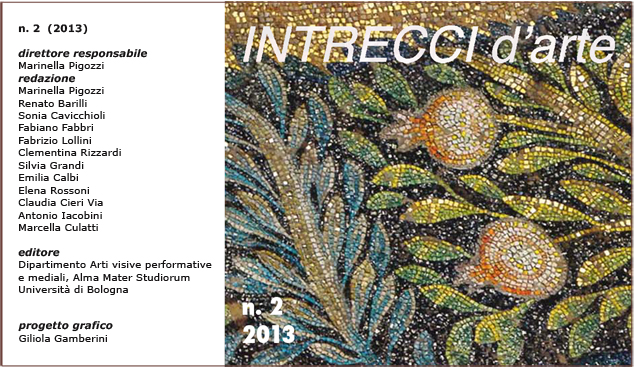ABC of bodies: anthropomorphic alphabets of the Sixteenth century in the Prints and Drawings Department of the Pinacoteca Nazionale in Bologna
DOI:
https://doi.org/10.6092/issn.2240-7251/3973Keywords:
Bologna, Anthropomorphic Alphabets, XVI centuryAbstract
Among different kinds of patterns, anthropomorphic alphabets set up a real genre in its own right, drawing on the iconographic repertoire of his time and reflecting it in charming and original compositions. For quantity, quality and variety of specimens preserved, the Prints and Drawings Department of the Pinacoteca Nazionale of Bologna is a quite unique case in Italy, boasting figured alphabets that span wide geographical and chronological boundaries, ranging from the late Gothic to the Nineteenth Century.
After an introduction on collecting events of so unusual and particular graphic core, the article focuses on some examples of figurative alphabets of the Sixteenth century of transalpine area. Starting from the Alphabet of the children of Hans Weiditz (1521), constructed in accordance with the strictest rules of geometry, encoded in contemporary Renaissance treatises, but also reflecting the reborn taste of the ancient friezes with putti, we pass to Peter Flötner’s (1534) and Jost Amman’s (1567) alphabets, where the letters are made up entirely of human bodies forced into complicated postures, sometimes even bawdy. These specimens represent some interesting calligraphic experiments, where man truly becomes the measure of the characters of the alphabetDownloads
Published
How to Cite
Issue
Section
License
Copyright (c) 2013 Valeria Butera
The copyrights of all the texts on this journal belong to the respective authors without restrictions.
This journal is licensed under a Creative Commons Attribution 4.0 International License (full legal code).
See also our Open Access Policy.
Images and photographs may have different terms of license.
In making material available online the Journal acts in good faith. Parties who have questions or who wish to contest the use of specific works may contact the Editor in chief.
Metadata
All the metadata of the published material is released in the public domain and may be used by anyone free of charge. This includes references.
Metadata — including references — may be re-used in any medium without prior permission for both not-for-profit and for-profit purposes. We kindly ask users to provide a link to the original metadata record.






